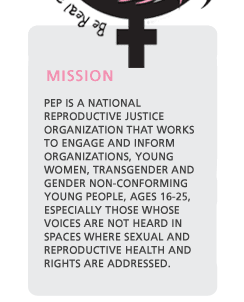Safe and accessible abortion and contraception have been core priorities of the progressive women's health movement since this movement began. But there have been moments when the women's health and the reproductive rights communities have been divided over particular contraceptives or ways of delivering reproductive health services. The reproductive justice vision offers a way of understanding the intersection of reproductive and social justice concerns that sheds light on the underlying cause of those divisions and suggests a way forward that may help these allied communities to avoid or resolve similar conflicts in the future.
The debates over waiting periods for sterilization and the safety of long-acting hormonal contraceptives are two issues where there have been divisions. In both cases, the experiences that low-income women and women of color have had with the technologies and services in question were fundamentally different from the experiences of middle-class and wealthy white women. These different experiences naturally shaped very different attitudes.
When poor women and women of color organized against involuntary sterilization, they fought to establish mandatory waiting periods that would allow women time and space away from clinicians who might be pushing them during or after childbirth to agree to be sterilized. These women wanted to make decisions about their fertility in a context when they were not experiencing postpartum vulnerabilities of various kinds. They also advocated for a written informed consent procedure to ensure that women would get full information about sterilization before making the decision. These policies made a lot of sense as a way to protect the rights of women who had been subject to sterilization abuse. But they came into conflict with the interests of white women, many with financial resources, who were trying to eliminate barriers to sterilization and enhance access to that choice and to what they defined as reproductive autonomy.
A similar racial and economic divide emerged with the introduction of long-acting hormonal contraception delivered by shots and implants. Women who had historically been defined as good choice-makers and producers of valuable children often liked the contraceptive efficiency represented by these new forms of birth control. But women from groups that authorities had historically coerced to contracept, often viewed long-acting methods with a great deal of suspicion. When policymakers moved quickly to establish Medicaid coverage for the new contraceptives, some poor women and women of color were suspicious. The suspicions of some women were deepened as well when judges sentenced women facing drug charges and other criminal convictions to become Norplant (the first contraceptive implant) users. Women who saw the new contraceptives as welcome additions to the range of choices available to them could accept some health risks and adjust to side effects that they were warned to expect. Women whose range of options was constrained by economic or other restrictions saw the risks and side effects as unacceptable threats to their health. These different perspectives, depending on race and class, have created political divisions within communities of women in the women's health movement and the reproductive rights movement.
By recognizing the ways that reproductive concerns are intertwined with the economic, political, social and cultural realities of women's lives, the reproductive justice framework creates the possibility of building understanding between the two communities and bringing them into greater accord - as well as enlarging the possibility for the emergence of a unified and strengthened movement speaking in one voice. | 





